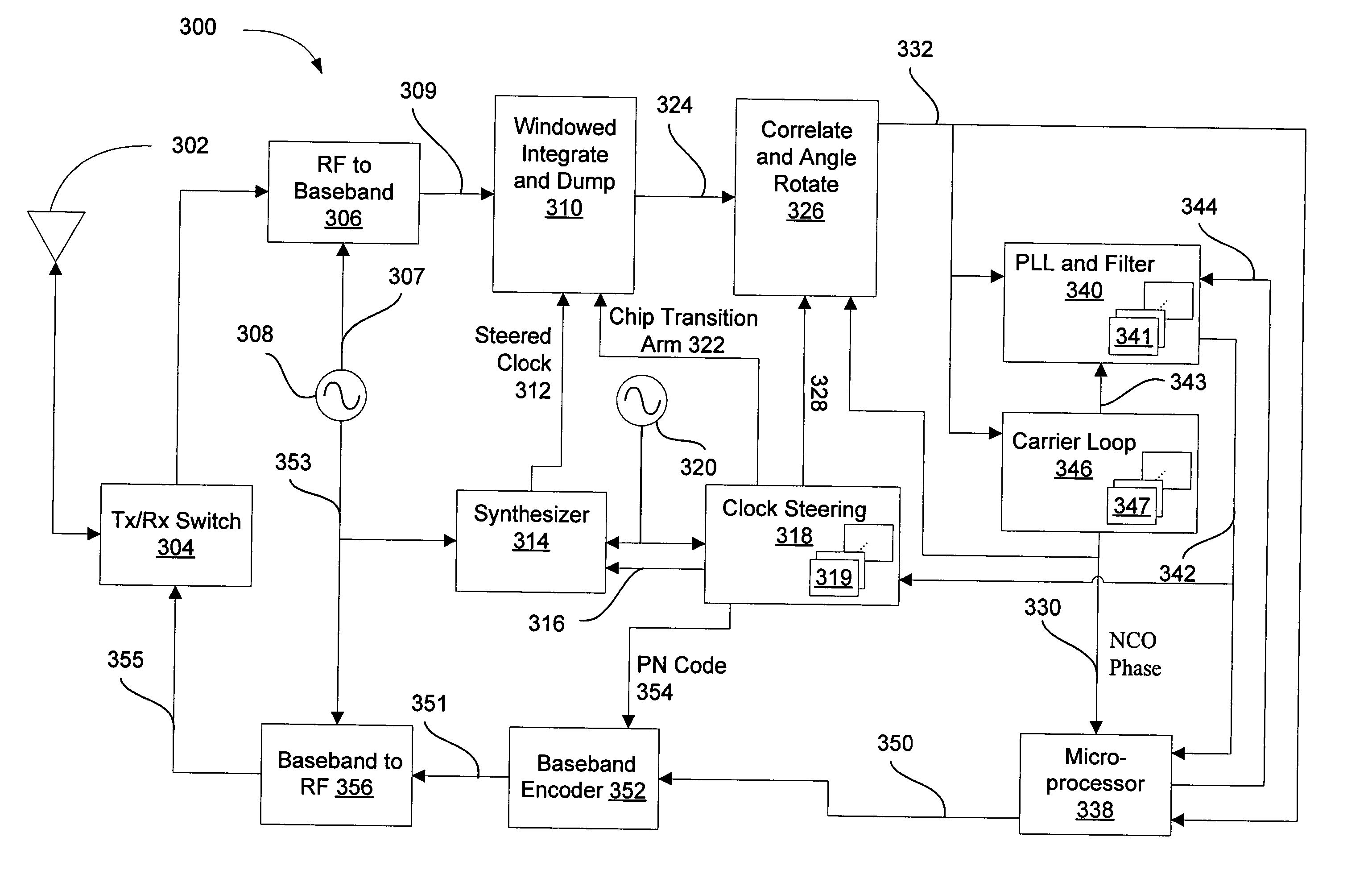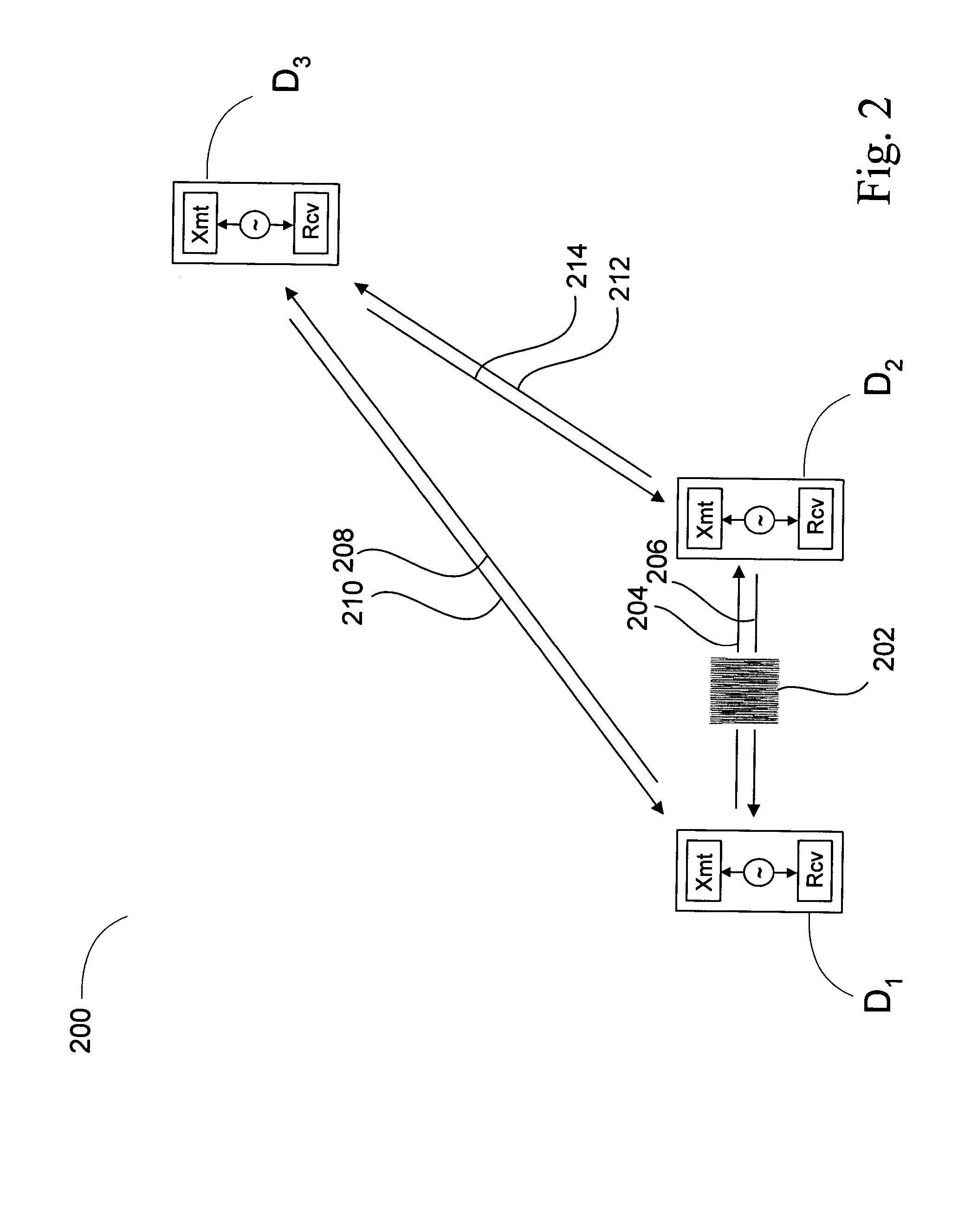Two-way RF ranging system and method for local positioning
- Summary
- Abstract
- Description
- Claims
- Application Information
AI Technical Summary
Benefits of technology
Problems solved by technology
Method used
Image
Examples
Example
DETAILED DESCRIPTION OF THE DRAWINGS
Many conventional local positioning systems use time of flight measurements of a signal sent from a transmitter to a receiver to determine a respective range between the transmitter and the receiver. In some systems, the receiver is located on a device whose position is unknown and the transmitter on a device whose position is known. If there are a sufficient number of devices whose positions are known, the device whose position is unknown can receive transmissions from each of the devices whose positions are not known, determine the time of flight from each of these devices, determine the range to each of these devices, and subsequently trilateralate its own position.
For a receiver to determine the time of flight between a transmitter and the receiver using the time of arrival of the transmitted signal, the receiver must know the time at which the transmitter sent the signal. In some positioning systems, the transmitter may transmit at a time...
PUM
 Login to View More
Login to View More Abstract
Description
Claims
Application Information
 Login to View More
Login to View More - R&D
- Intellectual Property
- Life Sciences
- Materials
- Tech Scout
- Unparalleled Data Quality
- Higher Quality Content
- 60% Fewer Hallucinations
Browse by: Latest US Patents, China's latest patents, Technical Efficacy Thesaurus, Application Domain, Technology Topic, Popular Technical Reports.
© 2025 PatSnap. All rights reserved.Legal|Privacy policy|Modern Slavery Act Transparency Statement|Sitemap|About US| Contact US: help@patsnap.com



